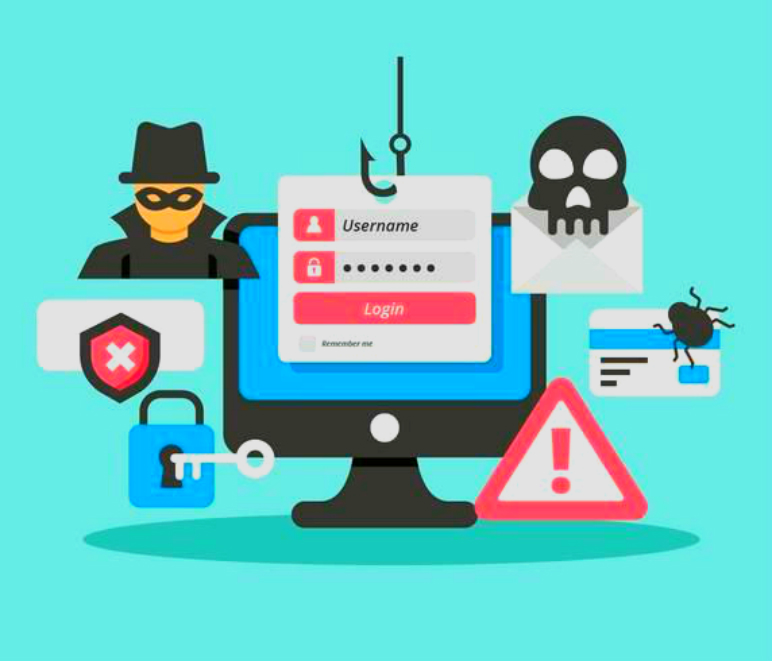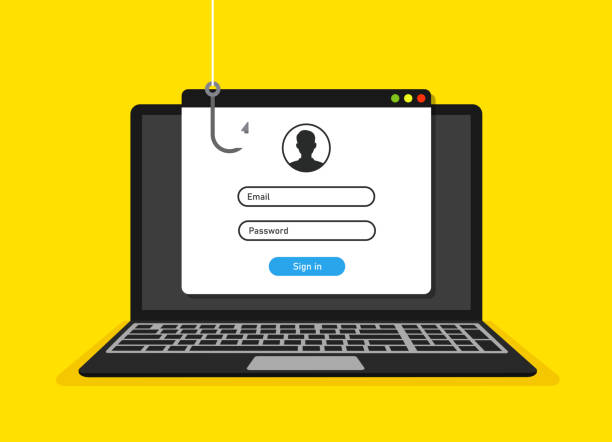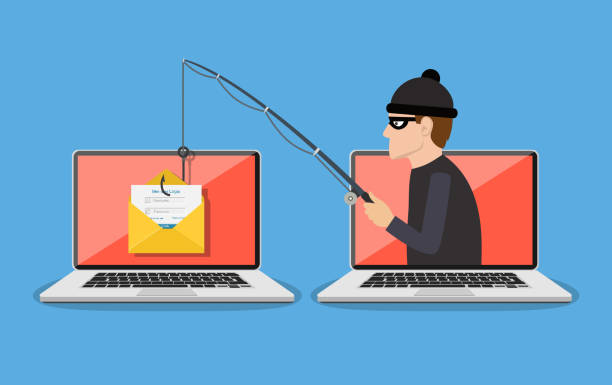Cybersecurity for email communication: why you need it and its best practices
Cybersecurity for email communication: why you need it and its best practices
Introduction
Email is a universal electronic communication tool used by millions of people. Companies use it to communicate with employees, suppliers, partners, and customers. It also serves as a suitable medium for cybercriminals to launch an attack that causes severe damage to the company. It is estimated that 90% of cyber attacks originate from Email.
Effective cybersecurity practices help the organization prevent attacks and protect the business. The entire organization should take responsibility for combating email attacks. They should implement email security practices and train employees to recognize the threats. This article discusses the best email security practices and their benefits.
What is Email?
Email, also known as electronic mail, means sending and receiving messages over the computer network from one person to another. It is the least expensive means of communication. It can send messages to one or more people at the same time. An Internet connection is required for the entire process.
An email contains simple text messages and attachments such as media files, spreadsheets, documents, etc. Individuals, professionals, business people, and organizations rely on email communication. Email is usually provided as a free service by providers. The customer can send and receive Emails from any computer connected to the Internet anytime.
There is no guarantee that Email can be viewed only by the sender and the recipient. Can use it to transmit viruses, spam, and phishing emails.
You can read more about The Best Website Security Tips: How To Make Your Website Secure.
What are email attacks?
Email attacks are the type of cyberattacks that cause severe damage to organizations. Since emails are the primary source of communication, attackers use them to infiltrate threats and exploit organizations’ functions. Depending on the attack motive, the attacker uses social engineering strategies, hacks the email account, or creates a fraudulent email to initiate an attack.
Social engineering strategies are used to trick employees and gain control of the company’s system. They spy on confidential information, spread malware, and disrupt system functions. Hacking is penetrating the system by exploiting vulnerabilities in the organization’s network. That includes stealing credentials and installing malware to obtain confidential information.
Cybercriminals use Email as a gateway for cyber attacks. Effective email security practices provide greater security and protection against attacks and threats.
Types of email attacks
Email attacks are categorized into the following types.
- Email spoofing
- Spear phishing emails
- Malware attack
- Phishing attack
- Compromising business emails.
➢ Email spoofing
Email spoofing is a technique of creating an email address with slight variations from the original email address. It involves sending an email from a spoofed email that tricks the recipient into following the intended instructions.
The attacker acts as a trusted source f the company to transfer money or share the company’s sensitive data. For example, the legitimate address of the company is xyz@example.com, and the attacker can change the email address to xyz@example.com. The employee who receives the Email from the attacker’s address may not notice this and will continue with the Email. Therefore, the email header must be double-checked and should not be compromised based on similarities.
➢ Spear phishing emails

Spear phishing is a typical cyber-attack where the attacker focuses on a specific person or company. This email scam is designed to look like the site of a well-known organization to gain the person’s trust. The attacker uses social engineering approaches to make the person believe that the Email is from a trusted source. The attention gained from the Email is then used to steal confidential company data.
Some emails may contain malware that infects the entire business function and causes severe damage to the organization. Traditional security processes cannot detect these threats by the employee alone. Employees should be aware of spam emails to protect themselves and the company from this threat.
➢ Malware attack
Malware is specially designed software that is used to disrupt or damage the enterprise system. It is also used to gain unauthorized access to the corporate network without the knowledge of the company’s employees. The malware attack is imposed on the corporate system to make the hackers capture the area of interest in the corporate network.
The target is financial information to transfer a large sum of money or sell sensitive corporate data on the black market. Once the attackers gain access to the company’s financial area, the Email with the pending transactions is identified. The company should implement appropriate security tools to avoid malware attacks.
➢ Phishing attack
Phishing is a social engineering strike in which an employee is tricked into opening a malicious email to access company resources. It is a mass email attack that targets a large group of employees in a company.
The employee can click on the malicious link or open an infected attachment. This way, credentials and other sensitive information are stolen, or malware is installed on the employee’s system to gain full access to the company.
➢ Business email compromise

Business email compromise targets employees who are responsible for finances or critical data to share their company’s resources with unauthorized individuals.
The attackers send the victim an email identical to their office’s mail ID and instruct them to transfer money. The amount is transferred to the cyber criminal’s account, and he is not identified until he notices the attack.
The attacker uses minimal technology to protect himself from all security tools and services. The attack occurs alongside normal business activities and affects the entire organization. It is all about money, and data is collected to select the right target for transferring a large amount of money.
Therefore, a business email compromise is also known as a man-in-the-email attack.
Business email compromise takes various forms pretending the name of the business manager, legal advisor, supplier, partner, etc. The attacker’s main objective is to gain money from all possible sources.
What is email security?
Email security is securing all data related to Email against unauthorized access or compromise. It also prevents incoming emails that contain spam and malicious content. Email data includes email account information, content, and sensitive attachments.
Email is an open source that can be an attack medium for cybercriminals. They entice employees to spread malware to access the company’s network. This unauthorized access helps attackers steal sensitive data and disrupt the company’s overall functionality.
Effective email security practices ensure a safe working environment for the organization. That enables secure communication through incoming and outgoing emails. The email security tools, encryption of the content of sensitive emails, and authentication of the resources provide more security.
Email service providers use specific strategies to protect their users from cyber threats. Google’s mail servers scan emails to filter spam and malware and provide convenient service to their users.
How email security works
The working of email security is as follows.
- Visualize the Email
- Verify the identity
- Neglect the unknowns
- Filter out the spam
- Encrypting the email data
- Backup the electronic data and update the security
- Secure the email gateway
➢ Visualize the Email
The company has software to monitor emails coming in and out of the network. This email visualization can provide insight into the nature of Email to protect employees from falling victim to fraudsters.
The effective visualization technique improves email security and prevents malicious and spam emails from entering the organization.
➢ Verify identity
The sender’s information matches the company’s details to ensure that the Email comes from a trusted source. The connected network and IP addresses are verified to ensure security.
The information about the unknown sender is collected and forwarded for authenticity verification. That is the first step in preventing spoofing and fraudulent emails.
➢ Neglect the unknown
The unknown Email is checked for authenticity, and the verified email request is processed. The other emails are rejected by the corporate network.
The spam or malicious link detected in the Email is deleted from the corporate network to ensure a secure work process.
➢ Filter out the spam
Cybercriminals can use innovative technology or critical social engineering hacks to evade initial scrutiny.
The employee viewing the Email can filter out the spam to find the signs of the email attack or verify the details with the authorized person before proceeding with the request.
➢ Encrypt the email data
The sensitive information exchanged through emails is encrypted to prevent the attacker from viewing the data. The sensitive information remains encrypted while the sender and the recipient can view the information.
You can use practical encryption tools such as the PAC Enterprise Certificate to protect sensitive company data and build customer trust.
➢ Secure electronic data and update security
Should store electronic data transmitted via Email in a secure and centralized source for emergency use. Backing up email data prevents data loss and faster recovery during a data breach.
It helps to preserve the lost emails and keep the email messages longer. Security tools are updated to protect the system from malware attacks.
➢ Secure the email gateway
A secure email gateway is a framework or infrastructure that protects against email threats. It acts as a firewall and scans incoming and outgoing emails for threats or malicious content.
It provides security features for blocking viruses and malware, filtering spam, archiving emails, and checking the content of emails.
It provides adequate protection against malicious messages, links, and attachments. These practical solutions help the company to reduce the number of attacks on the company.
Need for email security
Email is a source that is open to vulnerabilities. Experts estimate that one in 239 emails is malicious, which poses a severe threat to the business.
Built-in security is not enough to detect the threat from emails. They are declared as the primary attack vector for exploiting corporate functions. The need to improve email security is as follows.
Email as the primary attack medium
Email serves as a communication medium between employees and the enterprise. Sensitive resources are shared in the Email to improve the organization’s functioning. The attackers impersonate valued employees to steal the organization’s funds.
They trick the employee into opening the malicious link to install malware on their computer and disrupt their functions. They also steal the company’s sensitive data and sell it on the dark web.
The weakest link is the most robust tool for the attacker
Cybercriminals target employees to elicit sensitive information. The unsuspecting employee may receive spam and malicious emails that cause severe damage to the company.
Although IT professionals are experts at detecting and blocking such dangerous emails, they must share their knowledge with other employees. They should train every employee to recognize phishing scams and other threats. That is helpful for all employees to protect them from social engineering attacks.
Inadequate built-in security
Built-in security tools and practices effectively detect cyber threats posed by malware, viruses, and system outages. However, they are insufficient to deal with technology-agnostic attacks damaging the company’s reputation.
Social engineering attacks, such as compromising business emails, entice employees to disclose financial details or reveal sensitive information. Human error can cause the organization to fall victim to cyberattacks not detected by built-in security systems.
Email attacks cause severe damage to the organization
Email attacks disrupt the normal operations of the organization. The attacker can access the network without authorization, resulting in the following effects of attacks.
➢ Data breach
➢ Downtime
➢ The reputation of the company
➢ Company finances
➢ Disruption of work function
Effective email solutions provide greater security and protect the organization from email attacks.
Best practices for email security
Email attacks can be challenging to detect and cause severe damage to the business. The company should adopt effective cybersecurity strategies to mitigate such attacks. Prevention is better than cure and is always the best course of action for a business.
The IT department should control all emails that reach and leave the company. That will ensure better protection against such attacks and improve the company’s security. Some of the preventive measures that should follow include.
➢ Raising employee awareness
Security is the responsibility of all company employees to ensure safe working practices. Email attacks can impersonate business executives, salespeople, attorneys, and payroll clerks to achieve their goals.
They may trick the employee into following the prompt in the Email to gain access to the corporate network. Must train employees to recognize the red flags that help identify the types of fraud.
Among the warning signs, employees need to be aware of are
- Faking the sender’s email address and the domain is a common tactic to get the employee to perform as requested. The mismatch in the email header should be avoided and reported to prevent the threat.
- The subject line, which appeals to a sense of urgency, must be reviewed before proceeding. The universal concept of social engineering is that people make poor decisions when panicked.
- The CEO’s new account information needs to be reviewed for accountability, as the new account information may have come from the attackers.
- Employees should avoid posting their email addresses in a public forum and sharing their passwords. They should not share their personal information via Email so the attacker can target the employee.
- A business email compromise is an email attack that is difficult for even experts to detect. You must pay attention to the signs and warnings to avoid such attacks.
➢ MSSP services
Managed Security Service Provider (MSSP) is outsourced monitoring and managing security devices and systems. They include the following services.
➢ Firewall
It protects and shields systems from malicious or unnecessary network traffic. It also prevents threatening content from accessing the computer or corporate network via the Internet.
➢ Intrusion detection
That is the process of detecting security vulnerabilities in the system.
➢ Virtual Private Network (VPN)
It is a private medium for sharing critical data on the public network.
➢ Vulnerability scanning
It is a computer program that can identify the corporate network’s vulnerabilities. It helps to improve network security.
You can read more about Is Your Company Vulnerable? Identify Cyber Security Risks In Your Network.
➢ Antivirus services
They prevent scans and detect and delete viruses from the system or network.
It provides round-the-clock services to ensure the safe functioning of the systems and services. It helps the organization manage and maintain a secure workplace.
➢ Endpoint Email Security
Endpoint email security helps employees avoid getting spammed. It filters out phishing emails and malicious URLs that enter the organization.
Data loss prevention is an important security tool for sensitive data. It scans emails and reports the spam content to the security teams. It also prevents the user from uploading sensitive data to a public cloud.
➢ Email encryption
- Email encryption encrypts the content of the Email to protect the sensitive document transmitted in the Email so that the intended people can only view it.
- Sharing sensitive details such as passwords, login credentials, and bank account information is vulnerable to data leakage. Encrypting Email protects data from misuse.
- Public-key infrastructure is used to encrypt and decrypt emails. The user is assigned public and private keys in digital form.
- The public key is accessible to everybody and stored on the critical server with the person’s name and email address. It encrypts sensitive information to protect the data from unauthorized users. The private key decrypts the emails stored in the recipient’s system.
- The effectiveness of the encryption process is achieved by integrating it into the everyday work function. It ensures privacy and protects sensitive information. It prevents data theft and helps in the secure sharing of resources via Email. It also protects data in lost emails or devices.
➢ Email Server Protection
An email server is a mail transfer agent that receives incoming messages and forwards the outgoing messages for delivery. It ensures a smooth flow of electronic messages from one system to another.
A hacker can attack the email server to disrupt standard transmission and function. The email server can be compromised to send malicious content to other users and damage the organization’s reputation.
Practical solutions are employed to ensure the security of the email server and safeguard its functioning. The email parameters listed in the server are processed, while others are neglected. The incoming messages are checked for trusted resources and processed.
The untrusted messages are rejected from the network. The content filtering tools filter out the spams that reach the servers. The number of connections accessing the server is limited to ensure better protection. These practical steps ensure better protection for email servers.
Apply the best cybersecurity solutions
The company should deploy the best cybersecurity solutions to perform secure functions systematically. These solutions help the organization to detect malware and threats and protect the entire system.
Email attacks with little technology and more emotion can trick employees. You can take the following steps to defend against such attacks.
- The company’s email accounts and devices should be secured with multi-factor
- authentication to prevent attackers from accessing the accounts.
- Must advise Employees to use strong passwords and change passwords regularly.
- They should use different passwords for different accounts to prevent data theft.
- The user should check the Email before opening the attachment and neglect emails from unknown senders.
- The links included in the Email are manually checked to determine the presence of malware.
- Antivirus software is installed in the system for secure processing and is updated regularly.
- You should use an efficient email security solution.
Adopting the best cybersecurity framework can help the company to be systematic and protective.
Intelligent email security
Email attacks use social engineering techniques that can bypass traditional security systems. Solutions such as secure email gateways, spam filters, and native tools from Microsoft and Google rely on domain authentication and payload verification.
They verify email address authenticity and detect malware in attachments.
An intelligent email security tool uses machine learning, anomaly detection, behavioral analysis, and natural language processing to detect various signals to identify corporate email threats.
Intelligent email security features include
- It analyzes the email data of all employees and maps their trusted email relationships available both inside and outside the organization.
- It checks email content for BEC fraud. It checks IP addresses, geographic locations, and keywords indicative of BEC attacks.
- When the threat is detected, it alerts the employees and educates them about it.
This method is advantageous in detecting the threat and avoiding damage to the organization.
Benefits of email security practices
➢ Productivity
Effective email security practices protect the organization from threats that enter through Email. They allow security teams to manage their policies and adjust their response depending on the intensity of the threats. The productivity of employees and cybersecurity professionals is improved.
➢ Better protection
The latest email security practices use advanced strategies and intelligence to identify risk, track attacker activity quickly, and block phishing attempts. System features are automatically updated to provide better protection against incoming threats.
➢ Secure communication
Business and agreements can be transmitted securely via Email, which helps the company grow. The sensitive content is encrypted, which facilitates the secure transmission of information and ensures data privacy.
➢ Cost-efficient
Effective email practices prevent spam and threat emails from entering the network. They provide greater security and prevent the company from having to pay penalties for cyberattacks.
➢ Avoids human error
It is estimated that 90% of security breaches are caused by human error. Effective email security practices filter out the threats and deliver the Email to the end user.
Conclusion
Email is an essential functional tool for all businesses. It plays an essential role in employees’ work lives. Effective email security practices improve the secure transmission of critical data across the network. Because Email is vulnerable to attack, securing the network and encrypting content contribute to email security. Email security practices complement cybersecurity practices to maintain a secure work environment.
The post Cybersecurity for email communication: why you need it and its best practices appeared first on Stop Web Form Spam.
https://www.ssl2buy.com/wp-content/uploads/2022/09/what-is-email.svg
https://www.stopwebformspam.com/cybersecurity-for-email-communication-why-you-need-it-and-its-best-practices/?utm_source=rss&utm_medium=rss&utm_campaign=cybersecurity-for-email-communication-why-you-need-it-and-its-best-practices



Comments
Post a Comment